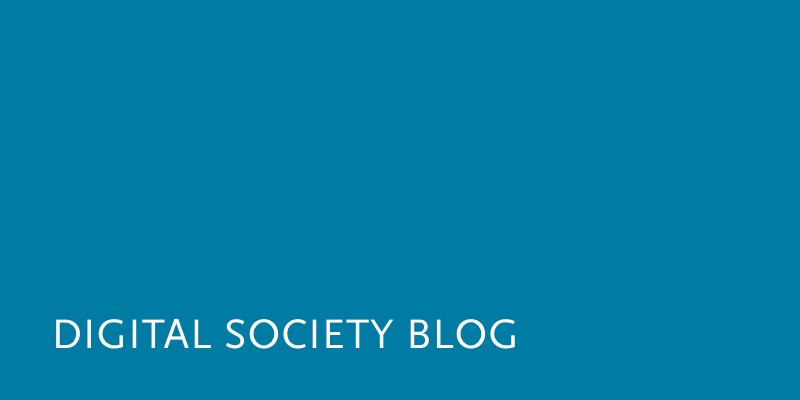Unsere vernetzte Welt verstehen

Unsicherheit ist der Schlüssel zum Internet
Netzbetreiber aus aller Welt ziehen an einem Strang, um Internet-Konnektivität herzustellen. Mehr als 55.000 sogenannte Autonome Systeme haben sie inzwischen miteinander verbunden. Allein die Existenz des Internets zeugt von einer beachtlichen, dezentralen Koordinationsleistung. Weniger sichtbar ist, wie Netzwerkingenieure diese Koordination praktisch erreichen und wie handlungsfähig die oft beschworene Community tatsächlich ist. Ein Weg in die Welt der Netzwerker führt über die grundlegenden Unsicherheiten, die sie tagtäglich überwinden müssen, um Konnektivität zu erbringen.
It does not tell us anything about the details of the social order that is at work at the core of the internet, about the relations, conventions, or about the actionability of the often referred to “community of networkers“. One approach towards understanding networker’s coordinative efforts is to lean on economic sociology and treat their efforts as matching parts to uncertainties that they are facing. Beckert (2007) states that for any market to function, and that actors need to overcome general uncertainties that relate to the worth of goods, to competition and to cooperation. How do market participants define and evaluate goods? How do they adapt offerings to fit a niche in the market or, try to influence market conditions in favour of their offerings? How can they trust that their exchange partners will live up to an agreement and cooperate? And with Thévenot (2002) we can ask even more profoundly: how do actors determine whether they should judge a situation by the principle of the market at all – or should they use other frameworks for interpretation such as a civic mindset?
Networkers Interact Through the Mechanisms That the Architecture Permits
Pondering these questions with regard to internet interconnection leads us back to the role of the internet architecture, because the architecture itself induces uncertainties that shed light on the questions above. Network operators are all tied to the socio-technical system that they produce together. They are in a situation where they continuously interact with each other through the network and by the mechanisms that the technical architecture permits. The architecture of the internet conditions how more general uncertainties like the ones above actually take shape. So, in the quest for understanding how networkers actually manufacture internet connectivity, we need to pay attention to specific, architectural uncertainties first and then relate them back to the overarching questions.
Looking at the Border Gateway Protocol
Let me expand on this by way of the example of the Border Gateway Protocol (BGP). BGP stands out, because all Autonomous Systems (ASes) have to use it in order to exchange routing information. The uncertainty in BGP stems from the fact that network operators cannot verify either the legitimacy or the authenticity of the routing information that they receive. (For reasons of simplicity, I am not elaborating on BGPsec or filter lists from internet Routing Registries here.) Also, it does not offer a mechanism that would prevent an AS from announcing false information. False routes propagate with BGP just as correct routes do: they pass from one AS to its adjacent ASes and so forth. That is, until ASes stop passing the routes or withdraw them. There is no central authority to watch over or control the global routing system. Beyond that, the protocol is said to be difficult to configure.
With these characteristics BGP allows for uses that run counter to the functionality of the routing system and continuously threat to de-stabilise it. The protocol is inherently prone to misuse and abuse. Often times, BGP is the source of unforeseen network events. Networkers jokingly refer to misconfigurations in BGP as fat finger mistakes. But even simple mistakes can lead to severe outages and loss of connectivity.[1] More dubious scenarios include the occupation of unused IP addresses (prefix hijacking) or the deflection of traffic in the context of surveillance, e.g., by means of announcing overly specific routes. All the while, network operators cannot easily trace back irregularities, because the internet was not designed with talk-back functions. Due to BGP network operators basically navigate a space, each according to their subjective map, that is based on information from hear-say.
What BGP Remains Silent About
The operational uncertainties are the ones referred to most often. But the uncertainties in BGP do not end here. They continue in the realm of what BGP remains silent about. If we think of BGP as a language, then the BGP UPDATE message fields would be its syntax. This syntax governs the structure of the communication between routers. It provides rules for what types of information network operators can automatically share with each other and how. In turn, the syntax also determines what cannot be communicated. For if there is no message field in BGP, there is no expression.
So it makes sense to ask whether the information that network operators can exchange with each other through BGP accommodates their needs and requirements. Or, if there are types of information that they would like to exchange in a standardised way through the routing system, but cannot because BGP does not allow for it.
For instance, BGP does not allow for the exchange of information that is of explicit business character. Without digging into related net policy debates, one could imagine that some network operators would appreciate a routing system that offered units, metrics or methods for settlements that could serve as a basis for a market at the core of the internet. But BGP does not offer such things. It cannot express aspects such as modes of accounting, price, vested rights, capacity, utilisation or methods for authentication. David D. Clark (forthcoming) calls the capabilities of a protocol its “expressive power“. One aspect of BGP’s lack of expressive power is that it does not suggest how to apply a market mechanism in internet interconnection. It simply does not offer explicit levers for valuation.
BGP Creates a Networked Market
Returning to the original questions about cooperation, competition and valuation, we can cautiously say that BGP reduces some aspects of uncertainty while it increases others. It reduces uncertainty in the area of cooperation, because BGP provides for something that could be called a networked market. IP interconnection with BGP leads to relationships or even bonds between networkers, which is opposite to loose market transactions and the concept of exchange. Bonds foster confidence towards the trustworthiness of the other. Further, all network operators depend on a reliable routing system which they know they can only maintain cooperatively. This does not eliminate the so-called free rider problem. But it does give a basic inclination to work together.
Implications for Competition Less Clear
With regard to competition, the implications of BGP appear to be less clear. The inherent characteristics of BGP lead to a situation in which, by design, every network operator holds different information about the state of the routing system. In theory this increases uncertainty which runs counter to the efficiency of a market. We should expect an emergence of both coordinative efforts that ameliorate this systemic uncertainty and attempts to capitalise on it. Collective measurement projects such as RIPE Atlas or the NLNOG RING as well as looking glasses seem to go in the direction of reducing uncertainty. However, further investigation would be needed to assess how meaningful this “information delta“ between networkers is in practice.
How is Valuation Anchored – if Not in BGP?
With regard to valuation, BGP clearly cements the notion of uncertainty in the internet architecture. By its lack of expressive power, it leaves network operators devoid of meaningful levers for valuation. This prompts the question: how is valuation anchored instead? And what is even the product in internet interconnection? If social coordination bridges uncertainty, then networkers who actually manufacture connectivity and therefore overcome uncertainties are the ones to give us leads. Their informal rules and conventions might contribute to stabilising (the market for) internet connectivity.
All that said, BGP is obviously just one aspect of the internet architecture, and internet interconnection does not happen in isolation, e.g., from a regulatory or cultural environment. So the degree to which the uncertainties described above play a role are difficult to determine. At the same time, it should have become apparent that the design decisions that lead to the internet architecture imply an unavoidable backdrop for any research about internet connectivity.
Footnotes:
[1] To get an idea of how common such uses are, have a look at https://twitter.com/bgpstream, an alert service for BGP hijacking and large-scale outages.
Beckert, J. (2007). Die soziale Ordnung von Märkten. In Märkte als soziale Strukturen (pp. 43-62). Frankfurt/Main: Campus Verlag.
Clark, D. (forthcoming). Designs for an Internet. [Draft version V 2.0]. Retrieved from https://groups.csail.mit.edu/
Thévenot, L. (2002). Conventions of co-ordination and the framing of uncertainty. In E. Fullbrook (Ed.), Intersubjectivity in Economics. London and New York: Routledge (pp. 181-197). London: Routledge.
Dieser Beitrag spiegelt die Meinung der Autorinnen und Autoren und weder notwendigerweise noch ausschließlich die Meinung des Institutes wider. Für mehr Informationen zu den Inhalten dieser Beiträge und den assoziierten Forschungsprojekten kontaktieren Sie bitte info@hiig.de

Jetzt anmelden und die neuesten Blogartikel einmal im Monat per Newsletter erhalten.
Plattform Governance
Netzecho: Reaktionen auf die Tagesschau in Einfacher Sprache
Seit 2024 gibt es die Tagesschau in Einfacher Sprache. Wie wird das neue Nachrichtenformat von Nutzer*innen im Internet diskutiert?
Chancen gegen Einsamkeit: Wie Pflegeeinrichtungen das Quartier vernetzen
Was hilft gegen Einsamkeit im Alter? Pflegeeinrichtungen schaffen neue Räume für Gemeinschaft und digitale Teilhabe.
Unfreiwillig nackt: Wie Deepfake Porn sexualisierte Gewalt gegen Frauen verschärft
Deepfake Porn nutzt KI, um täuschend echte Nacktbilder ohne Einwilligung zu erzeugen, meist von Frauen. Wie können wir Betroffene besser schützen?




